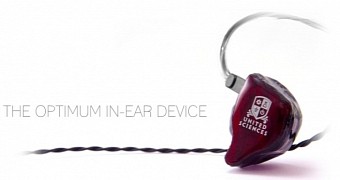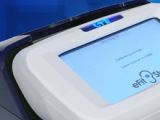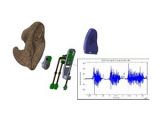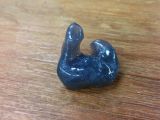Over the decades, earphones, earbuds in particular, have gone through countless redesigns, leading to there being several standard sizes, shapes and materials typical for their engineering. However, nothing beats custom fitting, something that united Sciences definitely agrees with.
However, custom fitting for the ear isn't as easy to do as for, say, shoes and clothing. It's not like consumers will glibly go and have their ears probed whenever they go out looking for an earphone set.
And yet, many people use them extensively, while jogging, when taking a call, when on a trip, even when at home (though over-ear headphones are more common there).
Even the best earphones can cause aches after a while, unfortunately, and United Sciences wants to put a stop to that once and for all.
Their method? Custom-fitted earphones built based on 3D models of peoples' inner ear. Or median ear, if we're going to be accurate.
The eFit scanner
One way to create custom ear fittings, whether for earphones or something else, is to make a mold of the ear out of some Putty facsimile.
These models pretty much always get warped or damaged when removed, however, not to mention the discomfort that recipients are put through in order to create them. And when they come out whole, it's usually because the ear orifice was stretched well beyond the comfort zone.
Using a 3D scanner can eliminate all those problems. The eFit works this way: it's pointed at a person's ear, then it sends out bursts of light to map the surface of the inner (really median) ear.
It only takes a few minutes to make a full scan, as shown during the Consumer Electronics Show in Las Vegas, Nevada.
There is even a virtual interface that shows the user if the model hasn't been fully built, if there are spots from which data hasn't been gathered.
When the scanner has gathered all the data it needs, the resulting 3D virtual model is fad to a 3D printer. United Sciences used MakerBot Replicator Mini printers, some of the cheapest and most well-sold consumer printers.
The 3D printer produces a mold of the “inner” ear, and on that mold is based the design of a custom-fitted earbud after that. The mold was printed on four printers at once (20 minutes) and assembled afterwards (30 minutes). Quite a change from the normal process which can take days or weeks.
Availability and pricing
Since the eFit Scanner is going to be offered as a service more than a product, it will be dependent on how much funding United Sciences gets and how quickly it expands its reach from state to state. In other words, it might take a while.
It will be worth it to at least try the idea out, if you have the time and money to spare. Not only will custom-fitted earbuds provide the best sound fidelity, it will allow biometric sensors to be installed as well.

 14 DAY TRIAL //
14 DAY TRIAL // 



